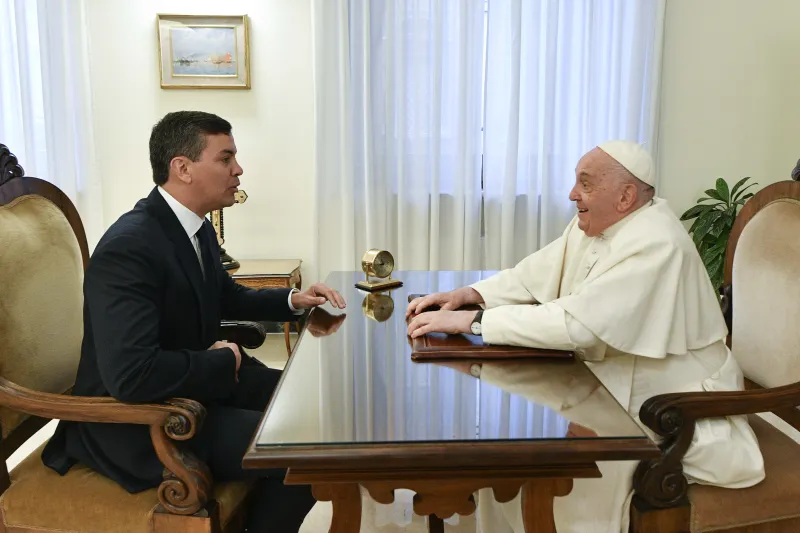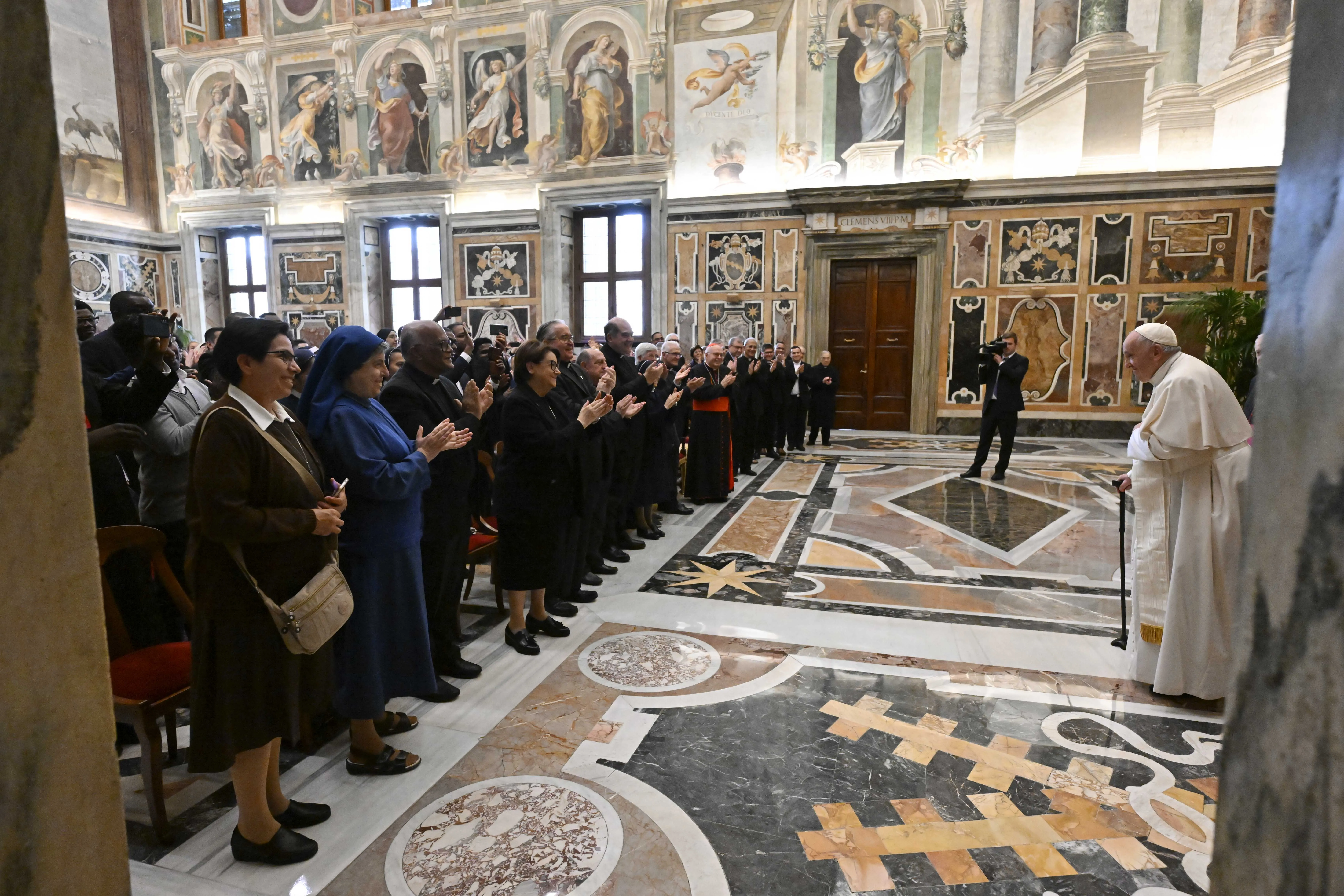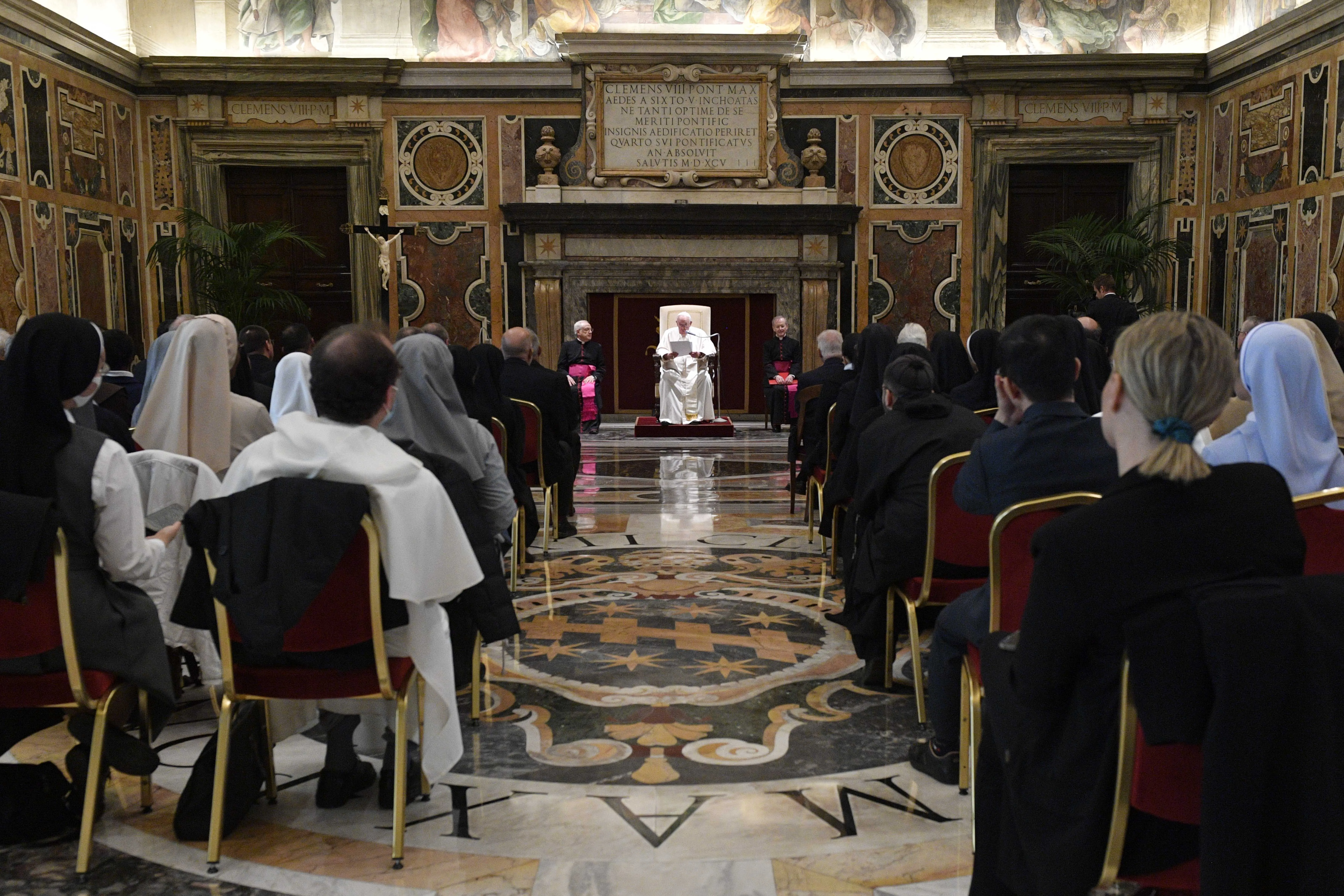
Rome Newsroom, Nov 7, 2022 / 08:03 am (CNA).
Pope Francis on Monday asked religious not to succumb to pessimism over a lack of vocations and to pray with him to “deliver us from the presumption of self-sufficiency and the spirit of worldly criticism.”
Addressing representatives of the Claretianum Institute of the Theology of the Consecrated Life on the occasion of its 50th anniversary at the Vatican on Nov. 7, the pontiff asked the religious to pray with him to God: “You who feed us with tenderness, deliver us from self-referentiality, from the diabolical deception of polarizations, from ‘isms.’”
Pope Francis warned that consecrated life today should not be discouraged by a “lack of vocations or by aging.”
“Those who allow themselves to be caught up in pessimism set aside their faith,” he continued.
“It is the Lord of history who sustains us and invites us to faithfulness and fruitfulness. He cares for his ‘remnant,’ looks with mercy and benevolence upon his work, and continues to send his Holy Spirit.”

The pope, departing from the manuscript, according to Vatican News, praised the Claretians for having “humanized so, so much of consecrated life” and for their desire to implement what their founder “valued so much.”
The Claretians were founded in 1849 by St. Anthony Claret. The congregation’s official title is Missionaries of the Immaculate Heart of the Blessed Virgin Mary. Members are active as missionaries around the world.
The Claretianum, founded in 1971, is incorporated into the Pontifical Lateran University as an institute specializing in the theology of consecrated life.
Pope Francis said religious life would find hope through the Word of God and the history and creativity of its founders.
“Religious life is understood only by what the Spirit does in each of the people called. There are those who focus too much on the external — the structures, the activities — and lose sight of the superabundance of grace in people and communities.”

While knowing the missionaries were “already facing several challenges peculiar to our time,” the pope encouraged the missionaries to embrace the “value of fidelity in following Jesus according to the spirit of the founders, to carefully care for community life, to live interculturality as a path of fraternity and mission, and to promote the encounter between different generations in consecrated life, in the Church and in society.”
“Do not tire of going to the frontiers, even to the frontiers of thought; of opening paths, of accompanying, rooted in the Lord to be bold in mission,” Pope Francis said.
“The Gospel teaches that there is a poverty that humbles and kills and another poverty, that of Jesus, which liberates and makes happy. As consecrated people, you have received the immense gift of participating in Jesus’ poverty. Do not forget, either in your lives or in your work at the university, those who live the other poverty.”
If you value the news and views Catholic World Report provides, please consider donating to support our efforts. Your contribution will help us continue to make CWR available to all readers worldwide for free, without a subscription. Thank you for your generosity!
Click here for more information on donating to CWR. Click here to sign up for our newsletter.




The harvest is plentiful but the laborers are few. May the Lord of the harvest inspire young and the young at heart to joyfully come and serve in the vineyard.
Lol!! From the source that discourages vocations from traditional families & those who no longer want pant suits & curlers… Those communities are dying, the ones that are growing? And from Peter’s chair? Silencio!
Now for the bad news that’s relatively good, We should not be discouraged by aging. Francis, a living example despite sciatica, other debilitating conditions he carries on. Continues ambivalence on abortion increasingly understood as favoring a woman’s choice. Just ask atheist prochoice Mariana Mazzucato his latest Academy for Life favorita. Mariana Tweeted way back in 2016, As an atheist, never thought i would love a Pope this much. What a star!
All of this wakens within the beleaguered faithful, those aging, many not so gracefully, knowledgeable of the charade, the immensity of what’s at stake – a renewed energy, defiant, willing to shout out the latest adage, Age is just a number! Whatever our age those graced with faith in the eternal Word must rally, soldiers semper fidelis to Christ.
Don’t be discouraged? Really?